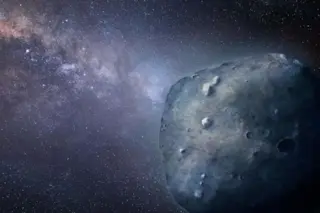A weird, blue rock known as 3200 Phaethon, or more commonly Phaethon, got pretty close to Earth last year. That gave scientists a unique opportunity to study it up close — and they found that this blue asteroid (that acts like a comet) is even stranger than they expected. “It’s a weird blue asteroid that created the Geminids and gets so hot that metals on the surface turn to goo,” Theodore Kareta, a graduate researcher at the University of Arizona, said about Phaethon at a press conference Oct. 23 at the Division for Planetary Sciences of the American Astronomical Society 50th annual meeting.
Before this flyby, scientists knew that Phaethon was blue and had a strange orbit that brings the asteroid close to the sun and then flings it out past Mars. It’s a “very eccentric, inclined orbit,” Kareta said. Scientists have also suspected for some time that the object ...














